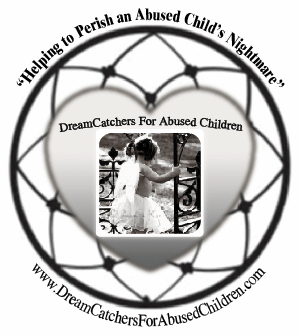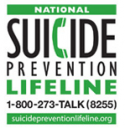“Why” Child Abuse Occurs
![]()
a discussion of the four most common follows:.
1. physical abuse
2. sexual abuse
3. neglect
4. emotional abuse
I. Physical abuse
Children who have been physically abused present with a multitude of psychiatric disturbances:
Anxiety
aggressive behavior
paranoid ideation
posttraumatic stress disorder
depressive disorders
suicidal risks are increased
poor self esteem
depression
dissociative disorders
substance abuse (alcohol, drugs)
violent behavior/outbursts
High risk parents/parent, care givers:
1. Over 90% of abusive parents do not have a psychotic or criminal personality.
Single parent is the sole responsible care giver of a child. Usually with little or no family or friends to assist them. They are lonely, did not plan their pregnancy, have little or no knowledge of child care and child development, and have unrealistic beleifs of child behavior. substance abuse is a common finding in families of abused children.
2. Groups living in poverty
a. increased number of crisis in their lives
b. they have limited access to economic or social resources for support during times of stress
c. increased violence in the communities where they live
d. association with poverty and teenage mothers, substance abuse
3. Other high risk parents are those where spousal abuse occurs in the home.
Parent with limited education, or mentally handicapped parents who perceive what is normal child behavior as misbehaving and punish the child harshly.
4. High risk children
a. Mentally retarded children
b. premature infants
c. infants with chronic medical problems
d. colicky babies
e. children with behavioral problems
5. 10-40% of abusive parents have experienced physical abuse as children.
This is only a statistic not an excuse for abuse.
3. Neglect
Neglect accounts for more deaths than physical abuse, such as medical needs neglect which occurs when the parents belief system runs against the medical needs of the child. Neglect to provide adequate nutrition, clothing, heat, basic shelter, and protection from environmental hazards are other forms of neglect leading to failure to thrive or the direct cause of injury to a child.
4. Emotional Abuse
Emotional abuse includes intentional verbal or behavioral acts that result in adverse emotional consequences, emotional neglect occurs when a caretaker intentionally does not provide nurturing verbal and behavioral action that are needed for healthy development.
Emotional abuse can include:
a. rejection
b. scapegoat assignment
c. isolation
d. criticism
e. terrorizing of a child
5. Sexual Abuse
Sexual abuse is defined as involving any minor child (age dependent upon state/country) that is intended for the sexual gratification of an adult.
Sexual abuse includes oral-genital, genital-genital, genital-rectal, hand-genital, hand-rectal or hand-breast contact; and showing pornography to a child or using a child in the production of pornography. Sexual intercourse includes vaginal, oral, or rectal penetration. Penetration is entry into an orifice with or without tissue injury.
In studies of juvenile offenders, younger perpetrators tend to have younger victims, but are more likely to have intercourse with older victims. Sex acts by young children, between young children is a learned behavior and are associated with sexual abuse or exposure to adult sex or pornography.
Sexual abuse most commonly occurs by an individual known by the victim, parent or other family member (intrafamilial). Rarely is the abuser a stranger. Intrafamilial and incest sexual abuse is difficult to document and manage because the child just be protected from additional abuse and coercion to not reveal or deny the abuse, while attempts are made to preserve the family unit. Children themselves may also decide to recant thier recent accusations of abuse due to fear of retaliation by the perpetrator or other family members. They may also recant out of fear of loosing contact with the perpetrator who is commonly a family member or close friend tied to t he family by various social means.
Violence is not common in sexual abuse, however, its incidence increases with the age and size of the victim and specific traits in the perpetrator. Violence is more likely to occur in association with a single incident by a stranger. In cases of vilent incest, the father has been described as sociopathic, with a sexual abuse extending outside the family circle.
Clinical manifestations of sexual abuse
1. Vaginal, penile, or rectal pain, redness of area, or a discharge with or without bleeding.
2. Chronic painful urination, constipation
3. Premature puberty in a female (nonspecific to abuse)
Behaviors associated with sexual abuse
1. sexualized activity with peers, animals, or objects
2. seductive behavior
3. age-inappropriate sexual knowledge and curiosity Statistics
Nonspecific behaviors to sexual abuse
These behaviors are nonspecific to abuse but are in need of investigation for needs of the child:
1. suicide gesture
2. fear of an individual or place
3. nightmares
4. sleep disorders
5. regression
6. aggression
7. withdrawn behavior
8. post traumatic stress disorder
9. poor self-esteem
10. depression
11. poor school performance (especially when previously good)
12. running away
13. self-mutilation
14. anxiety
15. fire setting
16. multiple personalities
17. somatization
18. phobias
19. prostitution
20. drug abuse
21. eating disorders
Statistics
Most of the increased numbers of child abuse is in the increase in the reporting of sexual abuse and the publicity surrounding sexual abuse.
Rate increase between 1976 to 1984 rose from 1.4/10,000 to 17/10,000 children.
In 1991:
838,232 cases of child abuse reported to the National Child Abuse and Neglect Data System, 15% was sexual abuse.
Female abuse
1. 12-38% were sexually abused by age 18.
2. 8% incidence of extra familial sexual abuse is actually reported.
3. 2% incidence of intrafamilial sexual abuse is actually reported.
Male abuse
1. 3-9% of males in the population were sexually abused by age 18.
2. males constitute 20% of the reports.
3. Pedophiles show a predilection for boys, theory suggests that the number of males who are sexually abused is higher.
4. boys may refrain from reporting the incident due to homophobic social stigma. Also, males are “expected” to be able to protect themselves from assault, boys may feel guilty if they are victimized.
Age ranges in sexual abuse
15 million women in the US have been involved in a incestuous relationship.
1. 33% of victims are under age 6
2. 33% are 6-12 years old
3. 33% are 12-18 years old.
Sex, age of offenders, and who they are
1. 97% are male who are on the average 10 years older than their victims.
2. Females are more often perpetrators in child-care settings, including baby sitting.
3. Abuse by females may be higher than reported due to younger children confusing sexual abuse with normal hygiene care and adolescent males may not be trained to recognize sexual activity with an older female as a form of abuse.
4. sexual abuse by stepfathers is 5 times higher than among natural fathers, the most common age for onset of abuse is age 10
5. abuse of daughters by fathers and stepfathers is the most common form of reported incest. Commonly the mother is unavailable to the father and is usually chronically ill or depressed. The mother is commonly the victim of child abuse when young.
6. brother-sister incest is the most common form of incest (but not the most commonly reported).
Incestuous fathers, a profile
1. Rigid
2. patriarchal
3. emotionally immature
4. alcoholic or drug abuse common
5. usually do not engage in extramarital affairs
Mothers in the home where father-daughter or son incest
1. chronically depressed
2. chronically ill
3. work takes them away on business trips overnight
4. show little or no interest in their husbands sexually
Pedophiles, a profile
Pedophiles become sexually attracted to children begins in their adolescence. Pedophiles seek opportunities that place them in and around children.
The common victim profile of a Pedophiles is:
a. mental and physical handicaps
b. unloved, unwanted children
c. previously abused children
d. children of single parent families
e. children of drug abusing parents
f. children with low self esteem
g. children who are poor achievers
By the time you finish reading this, 15 children will have been abused; In the next five minutes, 30 more; Within the next hour, 360 more; And by tonight, close to 8,000+ children will have suffered from abuse, 5 of which will die. Child abuse has increased 134% since 1980 and is now considered a worldwide epidemic. The high jump in child abuse deaths and the shocking increase in statistics highlights the frightening lack of public knowledge.
Educate Yourself -- Learn the Facts
It May Just Save a Child's Life!!


















![Validate my RSS feed [Valid RSS]](http://dreamcatchersforabusedchildren.com/wp-content/uploads/2009/10/valid-rss.png)













Prosecutors: NY mom repeatedly abused kids, pets – Washington Post | Pet Animals Says:
[…] DreamCatchers For Abused Children » “Why” Child Abuse Occurs […]
Posted on January 22nd, 2010 at 4:24 pm